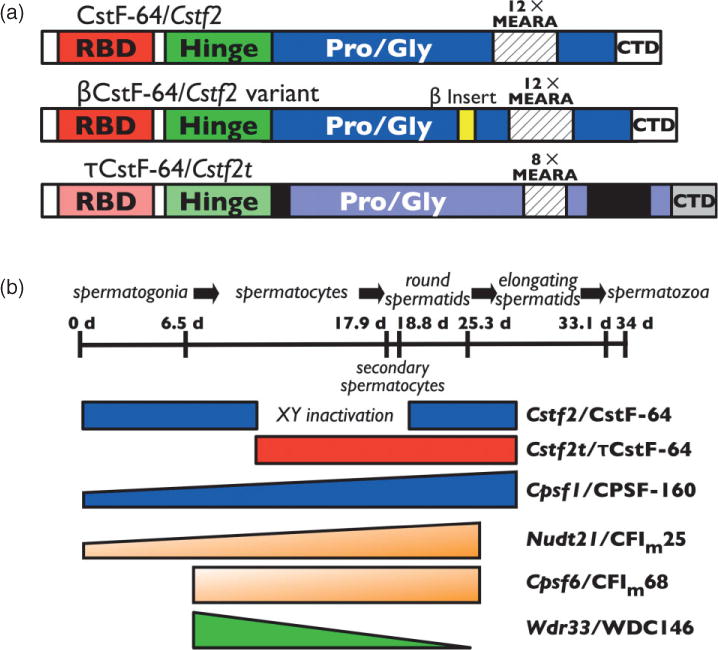FIGURE 2.

Proteins involved in testis and brain alternative polyadenylation. (a) Three forms of CstF-64 are involved in polyadenylation. βCstF-64 (middle) is an alternatively spliced variant of CstF-64 (top) that is expressed in vertebrate neurons. τCstF-64 (bottom) is an autosomal paralog of CstF-64 that is expressed primarily in male germ cells in mammals. The RNA-binding domain, CstF-77 interaction domain (Hinge), proline- and glycine-rich domain (Pro/Gly), MEARA amino acid repeats, and C-terminal domain are indicated. (b) Expression patterns of alternative polyadenylation proteins during spermatogenesis. A timeline of spermatogenesis in mice has been shown (~34 days). Cells that undergo mitotic division (spermatogonia), meiosis (spermatocytes), and postmeiotic development (round or elongating spermatids, and spermatozoa) are indicated. Expression periods for CstF-64, τCstF-64, CPSF-160, CFIm25, CFIm68, and WDC146 are at bottom. XY inactivation indicates the period of male sex chromosome inactivation.
